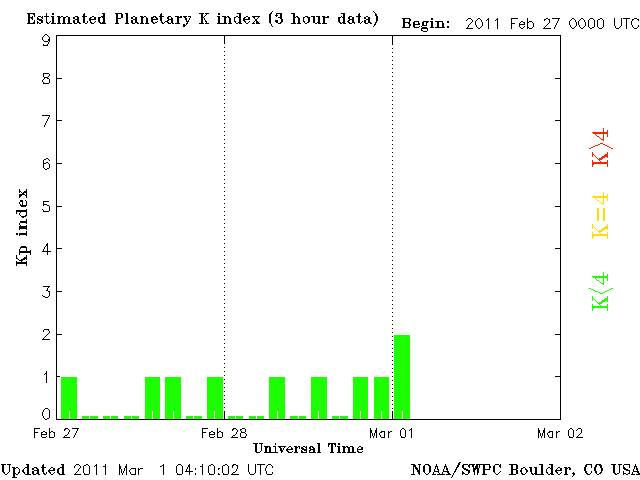The sun has been unusually quiet during the most recent minimum of its 11-year solar cycle, but it now activity appears to be picking up. During the periods of greatest solar activity, conditions in the ionosphere can change significantly with time and position, affecting GPS accuracy. WAAS can correct for this to a certain degree, but unless you live very close to a WAAS station, there will be some additional positional uncertainty in your GPS measurements. The National Weather Service’s Space Weather Prediction Center offers info and forecasts of current and upcoming solar weather conditions. Pay special attention to the Satellite Environment Plot, which shows conditions at the geosynchronous orbit elevation (about 23,000 miles); while GPS satellites are in a lower orbit at around 12,000 miles, they will likely see a similar environment.

In particular, watch the Kp (planetary index):

When Kp shoots up above 4, ionospheric conditions are likely to become less uniform, potentially leading to GPS accuracy degradation. If it gets really high, that’s the time to look for aurora at night, as well as possible disruptions in telecommunications and the power grid.
Trivia note: The Space Weather Prediction Center was one of the earliest sites on the World Wide Web.